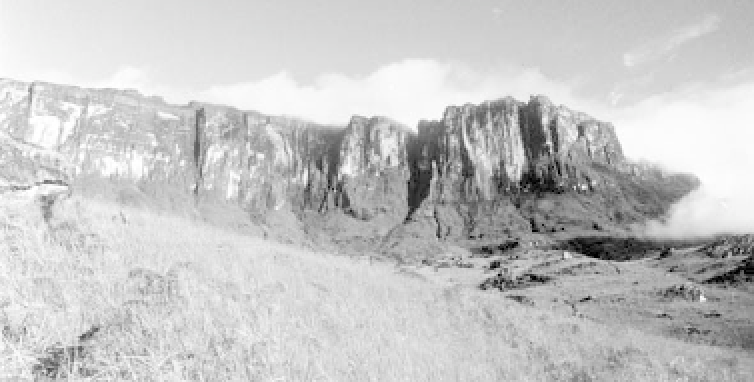Geology Reference
In-Depth Information
SUBTERRANEAN KARST FORMS
()
a
Waters from streams sinking into limestone flow through
a karst drainage system - a network of fissures and
conduits that carry water and erosion products to springs,
where they are reunited with the surface drainage sys-
tem. In flowing through the karst drainage system, the
water and its load abrade and corrode the rock, helping to
produce cavern systems. These
subterranean landforms
contain a rich variety of erosional and depositional forms.
()
b
Erosional forms in caves
()
c
Caves are natural cavities in bedrock. They function as
conduits for water flowing from a sink or a percolation
point to a spring or to a seepage point (Figure 8.17). To
form, caves need an initial cavity or cavities that channel
the flow of rock-dissolving water. The origin of these
cavities is debatable, with three main views taken:
Figure 8.16
Proposed sequence of events leading to
'bollard' rock formation in quartzitic sandstone,
north-central Thailand. (a) Polygonal cracks develop in a
case-hardened surface that act as avenues of weathering.
(b) Weathering deepens the cracks, forming a convex
surface on each polygonal block. (c) Further weathering
removes the edges of the polygonal blocks and deepens and
widens the cracks.
Source:
Adapted from Robinson and Williams (1992) and
Doerr (2000)
1
The
kinetic view
sees tiny capillaries in the rock
determining the nature of flow - laminar or turbu-
lent. In capillaries large enough to permit turbulence,
a helical flow accelerates solution of the capillary walls
and positive feedback does the rest to form a principal
cave conduit.
2
The
inheritance
or
inception horizon
view envi-
sions a pre-existing small cavity or chain of vugs,
Plate 8.15
Kukenan Tepui, Venezuela.
(
Photograph by Stefan Doerr
)




